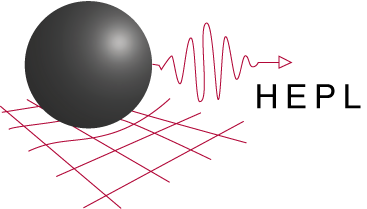News & Events
HEPL-AEROASTRO Seminar
Wednesday, February 2, 2011
Brent Ware
California Institute of Technology / Jet Propulsion Laboratory
LISA (as seen from the JPL Interferometry Testbed)
Abstract: In August, the National Academy of Sciences decadal survey, Astro2010, chose the Laser Interferometer Space Antenna (LISA) as one of two space-based science missions to go forward in the next decade. LISA is a joint NASA/ESA mission designed to observe gravitational waves from cosmological events. These events include massive black hole mergers from galactic collisions, extreme mass ratio inspirals from stars falling into the massive black holes at the
center of galaxies, and the millions of compact binaries (neutron stars, white dwarfs, solar mass black holes) in our own galaxy. LISA will also serve as a dark energy probe, and might detect backgrounds from the Big Bang.
These events all generate (as-yet unobserved) gravitational waves, which vibrate the fabric of space-time as they pass through our neighborhood. LISA is comprised of three spacecraft 5 million kilometers apart in an earth-trailing orbit. Using an unusual type of laser interferometry, the displacement of the three spacecraft will be measured with picometer accuracy.
At JPL, we have developed the fundamental LISA science instrument, the phasemeter, which measures the phase of the laser light between the spacecraft with microcycle accuracy in the presence of millions of cycles of background noise. The patented phasemeter design
has wide applicability to other metrology applications. We have also built a testbed which emulates the spacecraft and allows us to test the phasemeter and many of the other technologies and algorithms developed for LISA in a realistic noise environment.
I will describe the science behind LISA mission, the challenges involved in making picometer measurements over 5 Gm, and how the JPL LISA Interferometry Testbed addresses many of those challenges. From Galileo's first observations of moons around planets, to COBE/WMAP studies of the cosmic microwave background radiation, observatories which study new realms have rewarded us with completely unexpected knowledge. An observatory which studies gravitational waves will open a completely new window on the universe. LISA is that observatory.
Bio: Dr. Brent Ware started his career as an electrical engineer. After a short stint working on pattern recognition R&D, he returned to school and obtained a Ph.D in high-energy experimental particle physics from the University of Texas at Austin. He was a member of collaborations which searched for the H dibaryon and made what are still the most precise measurements of separate lepton number violation and weak neutral current violation. He had the good timing to graduate shortly after
the Superconducting Supercollider was cancelled and flooded the job market with several years supply of experimental high energy physicists. In what has now become an obvious pattern of trying to detect tiny effects, Dr. Ware was a postdoctoral fellow at Caltech, where he worked on the Laser Interferometer Gravitational Observatory (LIGO), a ground-based gravitational wave detector. After a short and failed flirtation with trying to make a fortune in the dotcom industry, he returned to
Pasadena and the California Institute of Technology/Jet Propulsion Laboratory. There he has been a system architect on the interferometric Terrestrial Planet Finder (TPF-I), and is now a member of the JPL LISA Interferometry group.
Time: 4:00pm – 5:30pm
Location: Physics and Astrophysics Conference Room 102/103
Light refreshments available 4:00pm; Presentation begiins 4:15pm
Open to All


